
Abelia: planting, pruning and care
A floriferous shrub that is easy to grow
Contents
The Abelia is a small shrub with abundant summer flowering and decorative foliage. Hardy down to -10°C to -15°C, it deserves a place in all gardens with mild winters.
From Abelia grandiflora ‘Kaleidoscope’ to Abelia triflora, including Abelia x grandiflora ‘Edward Goucher’ and ‘Prostrata’, all are easy to grow in full sun or partial shade, in any well-drained soil and sheltered from cold winds. Low-maintenance and resistant to diseases, as well as urban pollution, the Abelia requires little care and upkeep.
How to successfully plant it, when and how to prune it, here are all our secrets for maintaining this beautiful summer-flowering bush.
Planting: where, when, and how
- Where to plant Abelia?
Hardy down to -10/-15°C, the Abelia prefers to be planted in regions south of the Loire that enjoy relatively mild and not too long winters.
Its great resistance to sea spray means it is often found in gardens along the Breton coast and the Atlantic shoreline. Provide it with a full sun exposure, well sheltered from cold, dry winds that can damage its flowering, especially when it is young. It will also tolerate a semi-shaded position.
Easy to care for, it is not very demanding regarding soil type and grows well in any good garden soil that is well-drained, even calcareous. However, it does not like heavy, compact, and wet soils. When young, it prefers soils that remain cool, but as the years go by, it will accept a soil that is occasionally dry in summer without any problem.
Often wider than tall (from 60 cm to 3 m in height and 60 cm to 2 m in width), Abelia lends itself to multiple uses: as a standalone plant, in free or trimmed hedges, flowering or low, in perennial beds or with other bushes, as ground cover, and even in pots for smaller varieties, on a terrace or balcony, to enjoy its jasmine-like fragrance during summer evenings.
-
When to plant?
Planting in autumn encourages rooting before winter. The Abelia is preferably planted in autumn, in October, but can also be reasonably planted from February to May, avoiding periods of severe frost or drought.
-
How to plant an Abelia?
As Abelia are small bushes, space them 60 cm to 1.20 m apart. Staking is unnecessary.
- Moisten the root ball by soaking it for 15 minutes in a basin of water
- Dig a hole three times wider than the root ball and about 50 cm deep with a spade
- Remove stones, roots, and weeds
- Loosen the soil well
- Create a small mound at the bottom of the hole with some of the excavated soil to support the roots of the bush
- Mix in equal parts with potting soil
- Make a good layer of gravel to ensure perfect drainage, especially if your soil is too heavy
- Place the Abelia in the centre of the hole, collar level with the soil, and adjust the height
- Bring back the excavated soil to tightly encase the roots without leaving any gaps
- Fill in the hole while keeping the bush upright
- Firm down with your foot
- Water generously at planting and weekly during hot weather in the first year of growth
-
Growing an Abelia in a pot
To grow this beautiful bush in a pot:
- Provide gravel or pouzzolane for good drainage
- Prune the bush each year to contain its growth
- Keep the soil moist in summer
- Mulch generously in winter
- In cold regions, bring pots indoors to protect them from severe frost
- Repot every 2-3 years
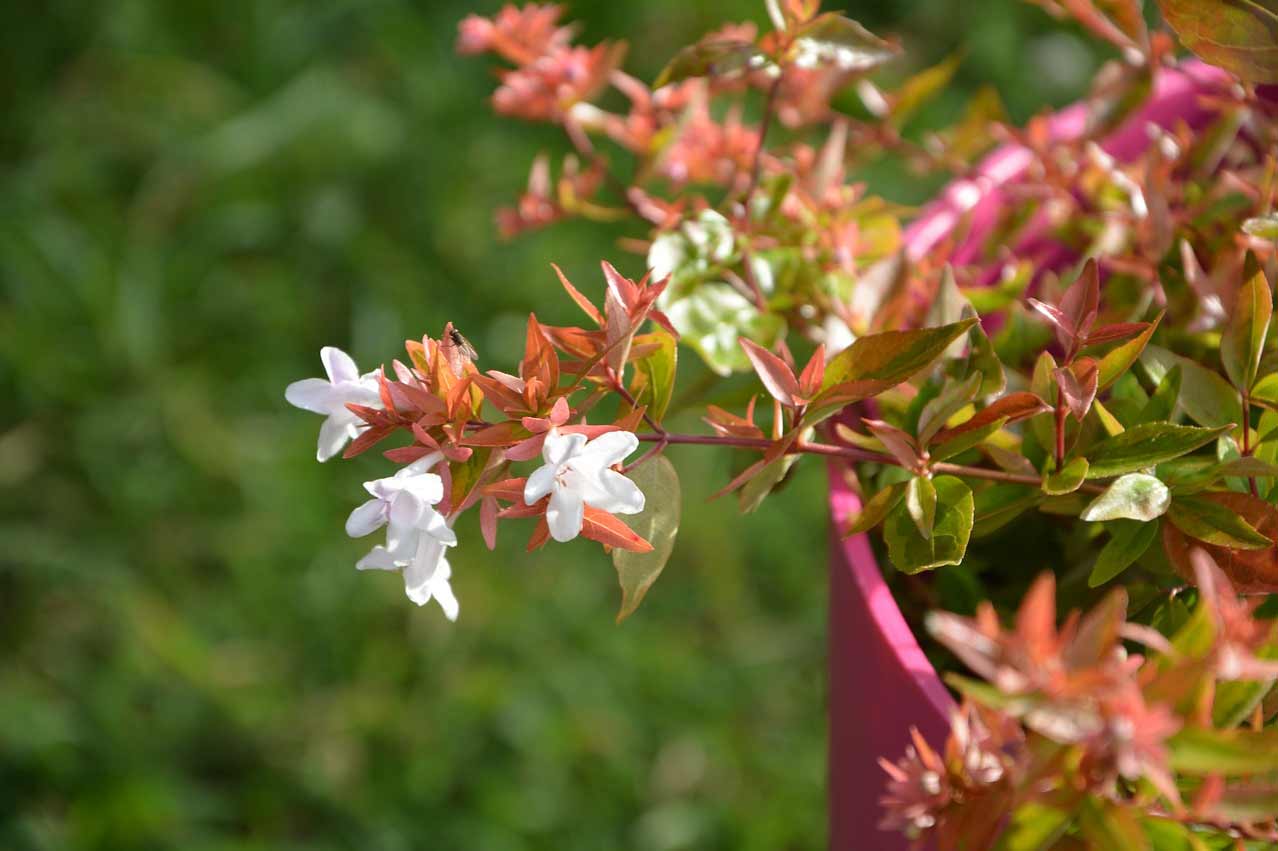
Some varieties of Abelia (dwarf Abelia ‘Pastel Charm’, Abelia grandiflora ‘Sparkling Silver’) are well-suited for pot cultivation
The pruning of Abelia
A simple annual pruning with a hedge trimmer or shear will be sufficient for this summer-flowering bush. It can be easily pruned into the desired shape: it makes a good subject for trimmed hedges.
Pruning helps maintain a nice compact and balanced habit, encourages its growth, and stimulates its generous flowering. Always prune after flowering, at the end of winter, between February and April, before the vegetation resumes:
- Using a pruning shear, remove at their base the tips damaged by the cold, the crossed, thin or dead branches, keeping only the most vigorous ones
- You can also thin out the branches to allow light to penetrate the centre of the bush
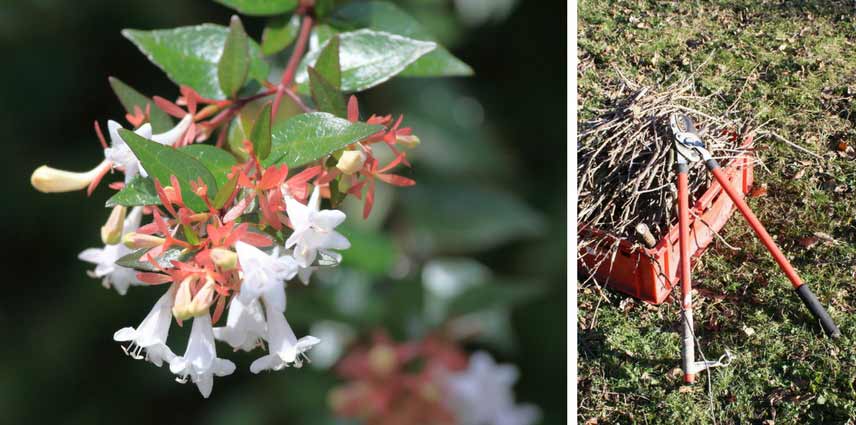
Prune Abelia each year to maintain a harmonious habit and stimulate its flowering
Discover other Abelia
View all →Available in 1 sizes
Available in 2 sizes
Available in 1 sizes
Available in 3 sizes
Available in 1 sizes
Available in 3 sizes
Available in 1 sizes
Available in 1 sizes
Available in 2 sizes
Available in 1 sizes
Caring for Abelia
Abelia is a low-maintenance bush that is easy to care for. Never sick, it is resistant to most diseases as well as attacks from parasitic pests. It just requires a bit of attention when young, during the first three years after planting.
- Youthful watering
In case of prolonged drought, and during the first two or three years, monitor your bush’s water needs and water regularly in summer. Afterwards, as it matures, it will better tolerate temporarily dry soil.
- A good winter mulch
In its early years, Abelia’s roots are sensitive to frost. It is advisable to thoroughly mulch the base before winter for the first three years after planting. It will toughen up over the winters. A thick organic mulch (at least 8 cm of bark mulch, pine needles, etc.) at the base of the bush is therefore highly recommended during the first winters or in case of exceptional cold.
- A winter cover?
If your Abelia is at risk of suffering from cold, brisk drafts, especially in regions where its hardiness may be critical, it is better to protect its aerial parts with a winter cover throughout the winter.
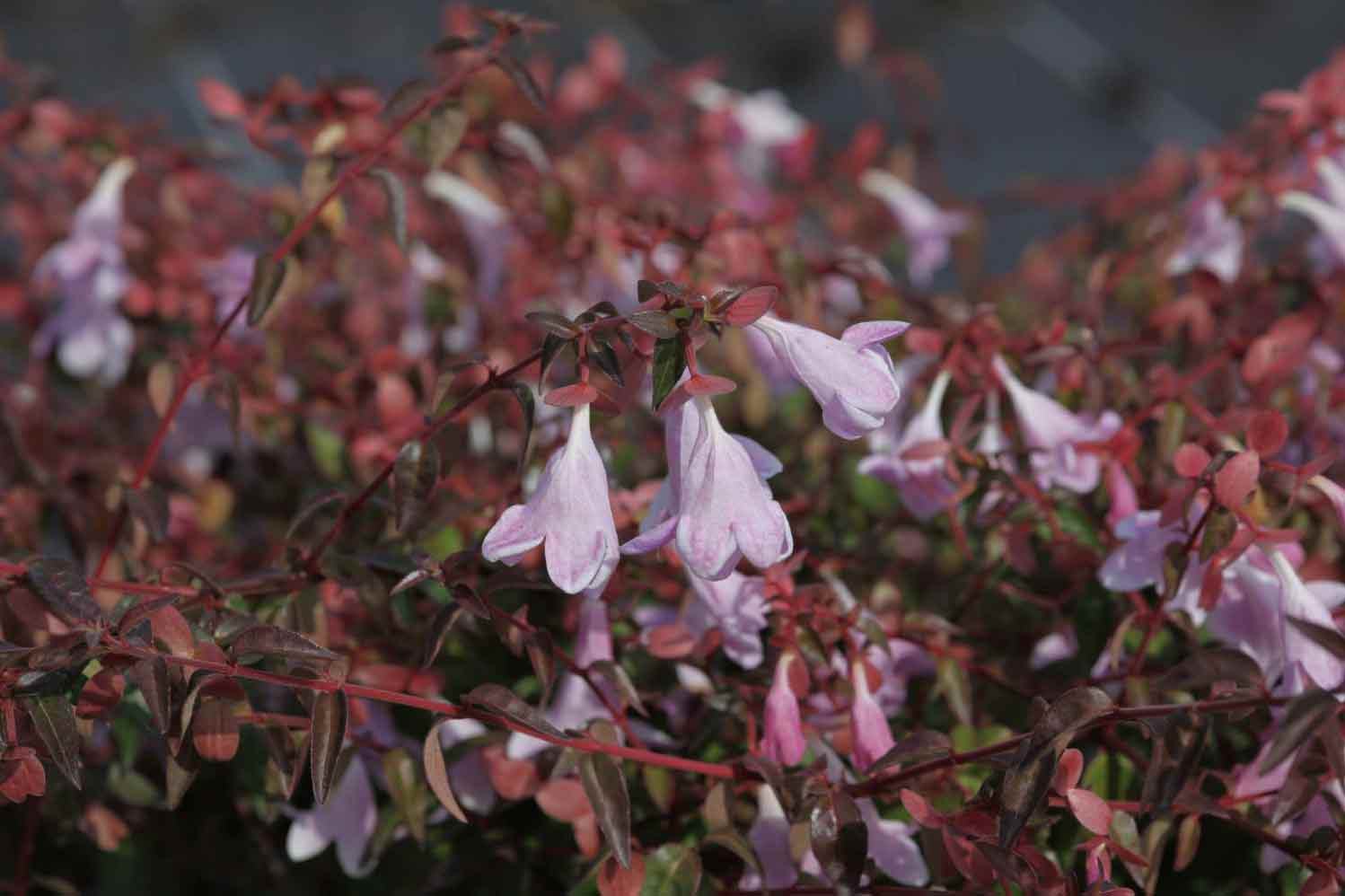
Abelia ‘Pinky Bells Noble’-LD-Denolf
- Subscribe!
- Contents































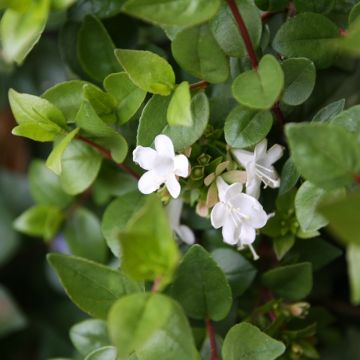
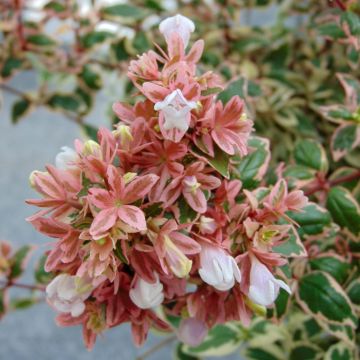
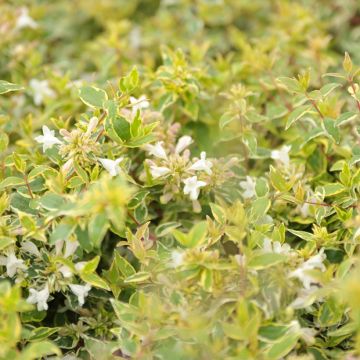
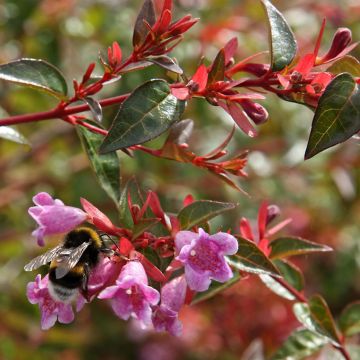

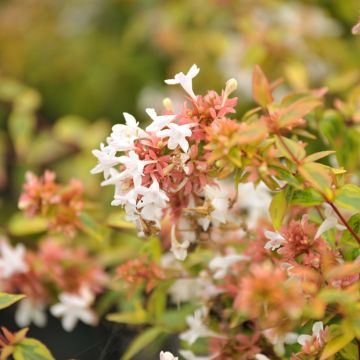
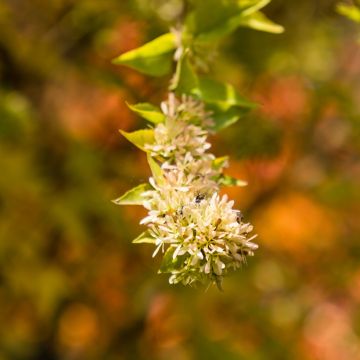
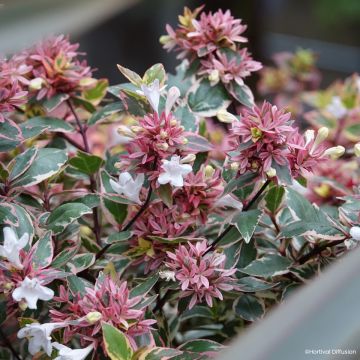
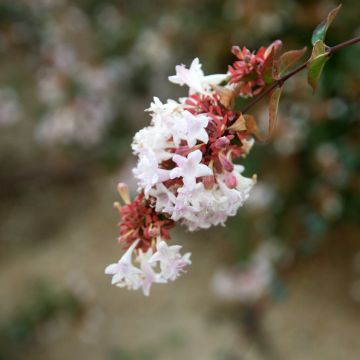
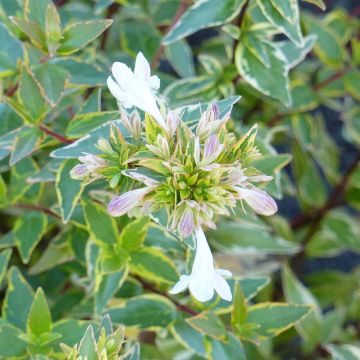
Comments